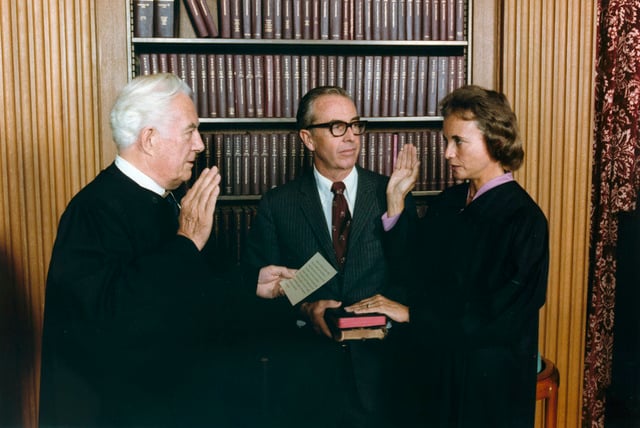
Former Supreme Court Justice Sandra Day O’Connor, who made history as the first woman appointed to the position, died Friday in Phoenix, Arizona. She was 93.
O’Connor had been living with dementia, which she announced in a letter in October 2018. She wrote, “As this condition has progressed, I am no longer able to participate in public life.”
She is remembered for her trailblazing achievements for women and her “cowgirl” spirit, which was molded from a young age on the “Lazy B” cattle ranch in Arizona where she was born in 1930.
After graduating near the top of her class from Stanford Law School in 1952, no law firm was willing to hire her because of her gender. She landed her first gig as a deputy county attorney after writing the San Mateo county attorney a long letter explaining how she could be useful, even offering to work for free.
After working her way up in the executive branch, she pivoted to the Arizona Court of Appeals, where she served as a judge and ultimately caught the attention of President Ronald Reagan. In nominating her for a spot on the Supreme Court bench in 1981, he called her “a person for all seasons, possessing those unique qualities of temperament, fairness, intellectual capacity, and devotion to the public good which have characterized the 101 brethren who have preceded her.”
During her tenure, O’Connor won the respect of both liberals and conservatives alike for her pragmatic approach to issues like abortion, affirmative action and voting rights. In one of her most notable cases, Planned Parenthood v. Casey, she affirmed a woman’s constitutional right to terminate a pregnancy, famously stating, “Some of us as individuals find abortion offensive to our most basic principles of morality, but that cannot control our decision. Our obligation is to define the liberty of all, not to mandate our own moral code.”
However, “she will claim that her most important work began when she stepped down, in 2006,” as Justice Sonia Sotomayor wrote in a 2017 profile of O’Connor. After retiring, O’Connor founded a nonprofit called iCivics, which provides middle and high school students with free online interactive games and curriculum to learn about civic engagement.
Sotomayor also noted how O’Connor “secured a central role on the court by blending determination with a politician’s skill at bringing people together.” Apparently, she would insist that all nine justices eat lunch together after arguments and would take her clerks on spontaneous hiking trips.
One former clerk, Andrew McBride, told Time Magazine that he used to be intimidated by her “beams of fire” glare, but that O’Connor – who battled breast cancer during her tenure and only missed two weeks of work – was “one of the most strong-willed people I’ve ever met.”
Her legacy lives on in the living women justices she paved the way for: Sotomayor, Elena Kagan, Ketanji Brown Jackson and Amy Coney Barrett. She was also admired by the late Ruth Bader Ginsburg, who once summed up O’Connor’s legacy perfectly: “In her work and days, she strived mightily to make what was momentous for women in 1981 … no longer extraordinary but entirely expectable.”



